I Tried 6 Breakfast Sausage Brands & The Best Were Rich and Juicy
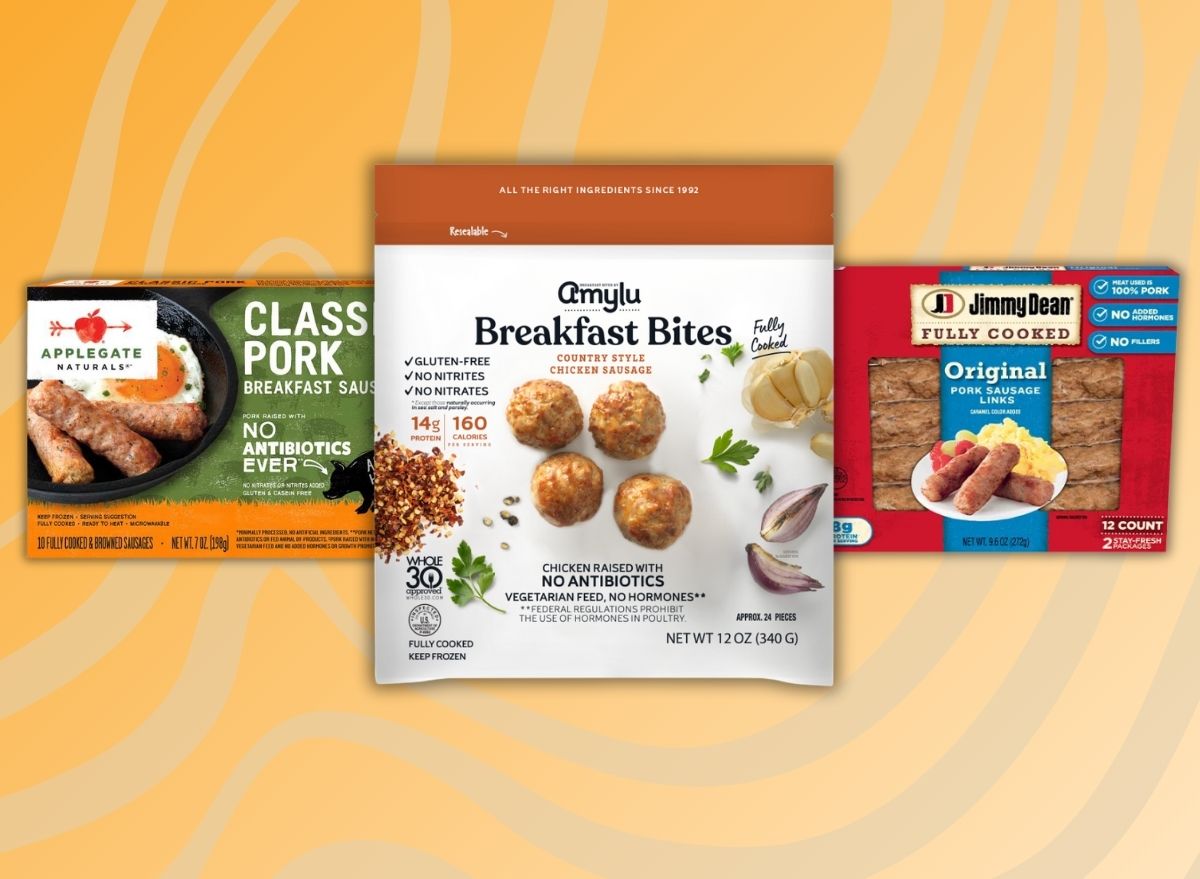
If you like a side of sausage for breakfast, you have plenty of options in the freezer aisle, both healthy brands and others not so much. From patties to links to meatballs, there are plenty of ways to get meat on your plate in the morning.
But which is best? If you want to avoid powerful fake maple flavorings and overly greasy links, you're in the right place.
I sampled six of the most widely available breakfast sausages from the grocery store. I heated each sausage according to the package instructions and tried them hot from the skillet.
Here's how these sausages ranked in descending order from my least favorite to the very best.
In This Taste Test:
- Jimmy Dean Fully Cooked Original Pork Sausage Links
- Banquet Brown 'n Serve Original Sausage Links
- Jones Dairy Farms Pork Sausage
- Applegate Classic Pork Breakfast Sausage
- Amylu Breakfast Bites
- Teton Waters Ranch Breakfast Sausage
Jimmy Dean Fully Cooked Original Pork Sausage Links
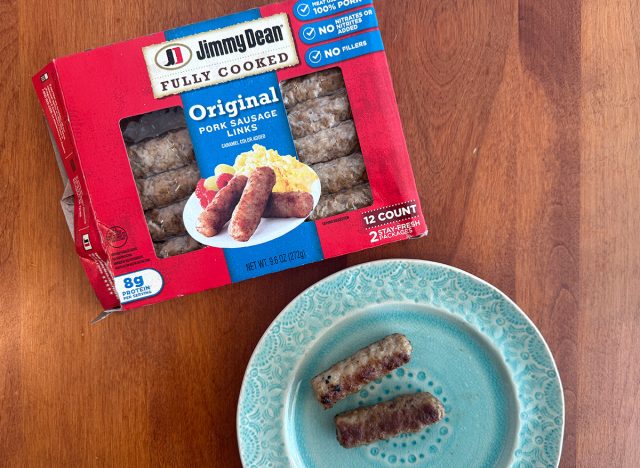
Calories: 270
Fat: 26 g (Saturated Fat: 9 g)
Sodium: 490 mg
Carbs: 1 g (Fiber: 0 g, Sugar: 1 g)
Protein: 8 g
One 3-link serving of this pork breakfast sausage from Jimmy Dean contains 26 grams of fat, nine of which are saturated. That's 40% of your daily recommended fat intake, and 45% of your daily intake of saturated fat. This breakfast side will also land you at 20% of your daily sodium allotment.
The look: These sausages are nobby and grayish, but they brown up quickly in a skillet. They're slick with oil and congealed fat is visible on the sausages before they're cooked.
The taste: As expected given the oily exterior, these sausages were gushing with grease when cut. They're slick and overly salty with an odd fake maple flavor in the background. The texture is oddly soft.
Banquet Brown 'n Serve Original Sausage Links
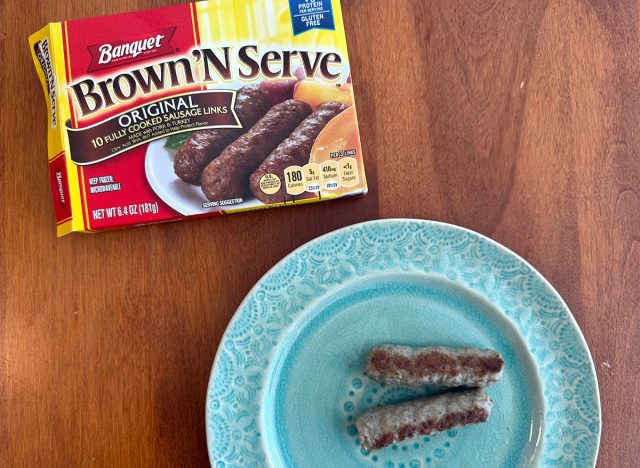
Calories: 180
Fat: 16 g (Saturated Fat: 5 g
Sodium: 410 mg
Carbs: 2 g (Fiber: 0 g, Sugar: <1 g)
Protein: 7 g
These sausages are made from a blend of pork and turkey, which makes them leaner than most in this test with 16 grams of fat per serving.
The look: As the name promises, these links browned up nicely in a hot skillet. They were decidedly gray before cooking and developed distinct brown stripes where the sausage made contact with the skillet.
The taste: These sausages are meaty tasting and savory. They're quite salty and have a nobby texture that isn't as cohesive as others I tried, which could be due to the two kinds of meat.
Jones Dairy Farms Pork Sausage
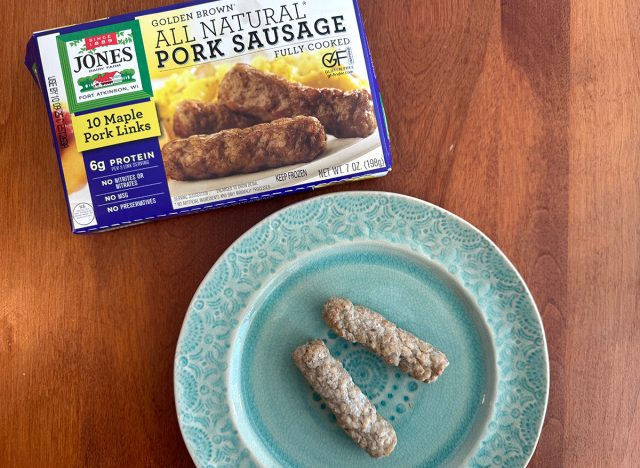
Calories: 250
Fat: 24 g (Saturated Fat: 8 g)
Sodium: 380 mg
Carbs: 1 g (Fiber: 0 g, Sugar: 0 g)
Protein: 7 g
These sausages have a short ingredient list: pork, water, salt, spices, and sugar. There's a scant amount of sugar, less than one gram per serving, but these are on the fattier end with 24 grams of fat and eight grams of saturated fat per serving.
The look: Jones Dairy Farms sausages have a soft and juicy texture. They're bumpy and natural-looking with a sheen of grease after they're cooked.
The taste: These sausages are rich and meaty. They're tasty, but slightly too heavy and greasy for breakfast. You can see globs of fat dispersed in the meat, which isn't the most appetizing.
Applegate Classic Pork Breakfast Sausage
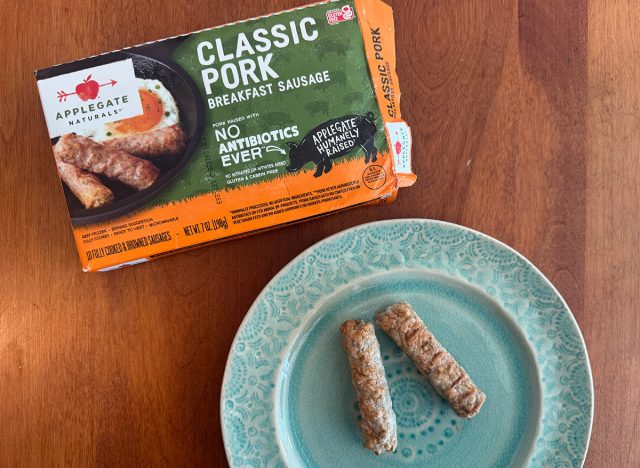
Calories: 170
Fat: 14 g (Saturated Fat: 5 g)
Sodium: 400 mg
Carbs: 1 g (Fiber: 0 g, Sugar: 0 g)
Protein: 11 g
These breakfast sausages from Applegate Naturals are made with pork, water, sugar, salt, and spices. They're lighter than many of the others I tried and higher in protein but still contain 400 milligrams of sodium.
The look: These sausages were lighter brown than others, so they might be made with leaner meat. They took on a golden-brown crust when cooked.
The taste: I like the subtle sweetness in these pork sausages. They're gently spiced with black, white, and red pepper, as well as ginger, which gives them a nice warmth. The texture is slightly chewy, which I prefer to the super soft and greasy sausages.
Amylu Breakfast Bites
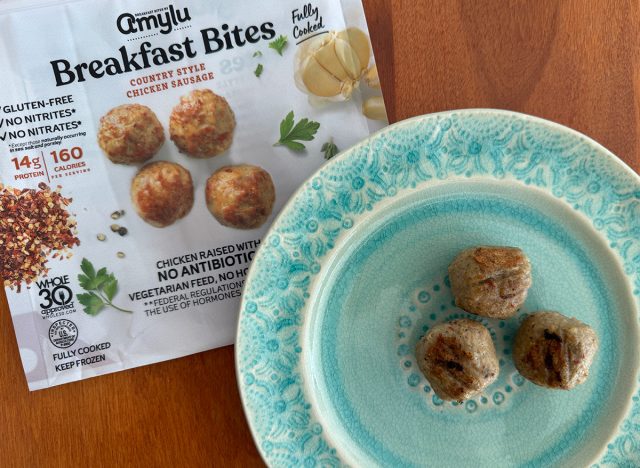
Calories: 160 cal
Fat: 10 g (Saturated Fat: 2.5 g)
Sodium: 670 mg
Carbs: 1 g (Fiber: 0 g, Sugar: 0 g)
Protein: 14 g
Unlike the other breakfast links I sampled, these bites from Amylu are shaped into little meatballs. A serving is six pieces and contains 10 grams of fat and 14 grams of protein–more than any other I sampled. It's worth noting that they contain more sodium than any other sausage I tried.
The look: These meatballs are smaller than a ping pong ball. They're mostly uniform with two slightly flattened sides with grill marks. They're lighter colored than the pork-based sausages and develop a shiny caramel crust in the skillet.
The taste: These sausage balls are sweet and slightly fruity-tasting. They're herby and have a firm, chewy texture. They're less greasy than the pork sausages, but moist and flavorful.
Teton Waters Ranch Breakfast Sausage
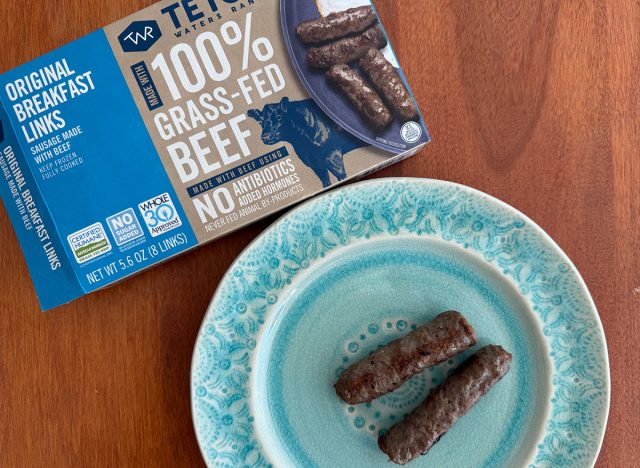
Calories: 200
Fat: 17 g (Saturated Fat: 7 g)
Sodium: 420 mg
Carbs: <1 g (Fiber: <1 g, Sugar: 0 g)
Protein: 11 g
This breakfast sausage is made from grass-fed and grass-finished beef. It has a moderate amount of fat and sodium and 11 grams of protein per serving.
The look: The beef sausages are a deeper, richer brown than the pork options I tried. Once cooked, the casing becomes shiny and tight, and these were smoother than the other sausages I tried.
The taste: These sausages were well seasoned, juicy, and savory. The beef is full-flavored and meaty, with a slight gaminess that likely comes from the grass feeding.
These sausages taste high-quality and you can tell they're made with little more than beef. They might be called breakfast links, but I'd happily eat them for lunch or dinner.
Why Trust Eat This, Not That!?
Eat This, Not That! is committed to creating high-quality content that you can trust to be accurate, properly researched, routinely reviewed, and updated with the latest information. Our writers, editors, and medical and/or certified experts consider this to be an unwavering promise we make to our readers in the pursuit of delivering impactful and meaningful content.









